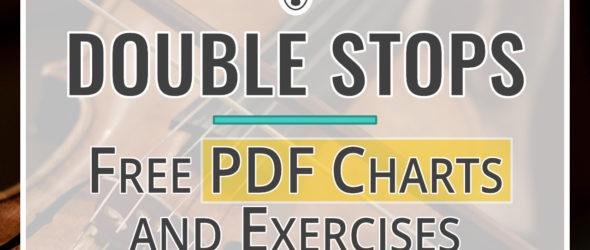
Double stops are very common in music, so today I’m sharing with you the booklet with a violin double stops chart for every interval up to the octave to help you quickly learn how to play them.

Free Violin Double Stops
Charts and Exercises
What are Double Stops?
A Double stop is an extended left-hand technique where you play two notes from two strings simultaneously. There are four ways to play double stops on the violin: two open strings, an open string with a fingered note on the string below, an open string with a fingered note on the string above, and both notes fingered on adjacent strings.
Double stops are played on just two strings. There are also triple and quadruple stops. For these, you play on three or four strings, respectively.
Double stops pop up often in violin music because it’s the smallest instrument of the string family. This makes it the most capable of playing more and more intervals because our fingers can cover more notes with ease. The bigger instruments; viola, cello, and bass; are harder to play double stops on. The large fingerboards make it harder for the player’s fingers to reach the necessary notes.
To learn more about double stops, make sure to check out this article!
Double Stops on Open Strings
The easiest double stops to begin playing are ones with both notes on open strings. There are only three double stops like this on the violin:
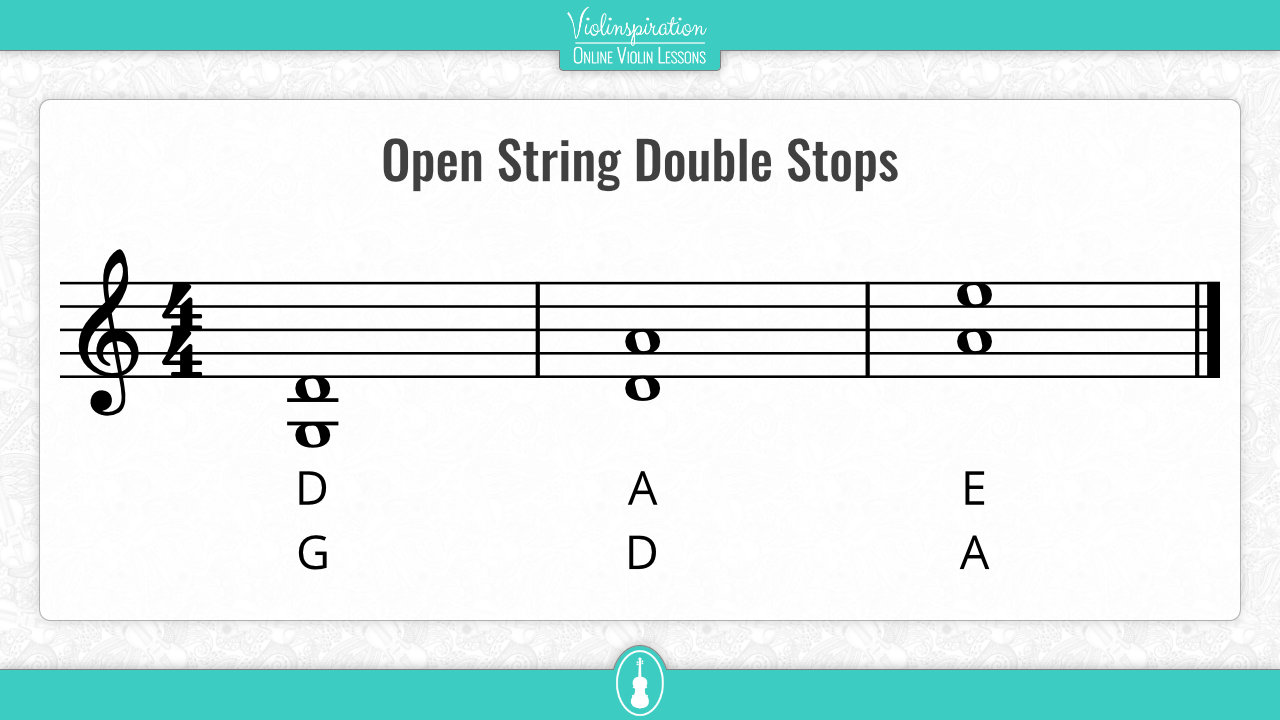
To play open string double stops, you’ll need to place the bow hair equally on both strings to create a balanced sound.
Just as learning how to play one string at a time, it takes a bit of practice to become comfortable with playing two strings at once. Here’s an exercise I like to use to practice getting a clear sound while playing double stops:
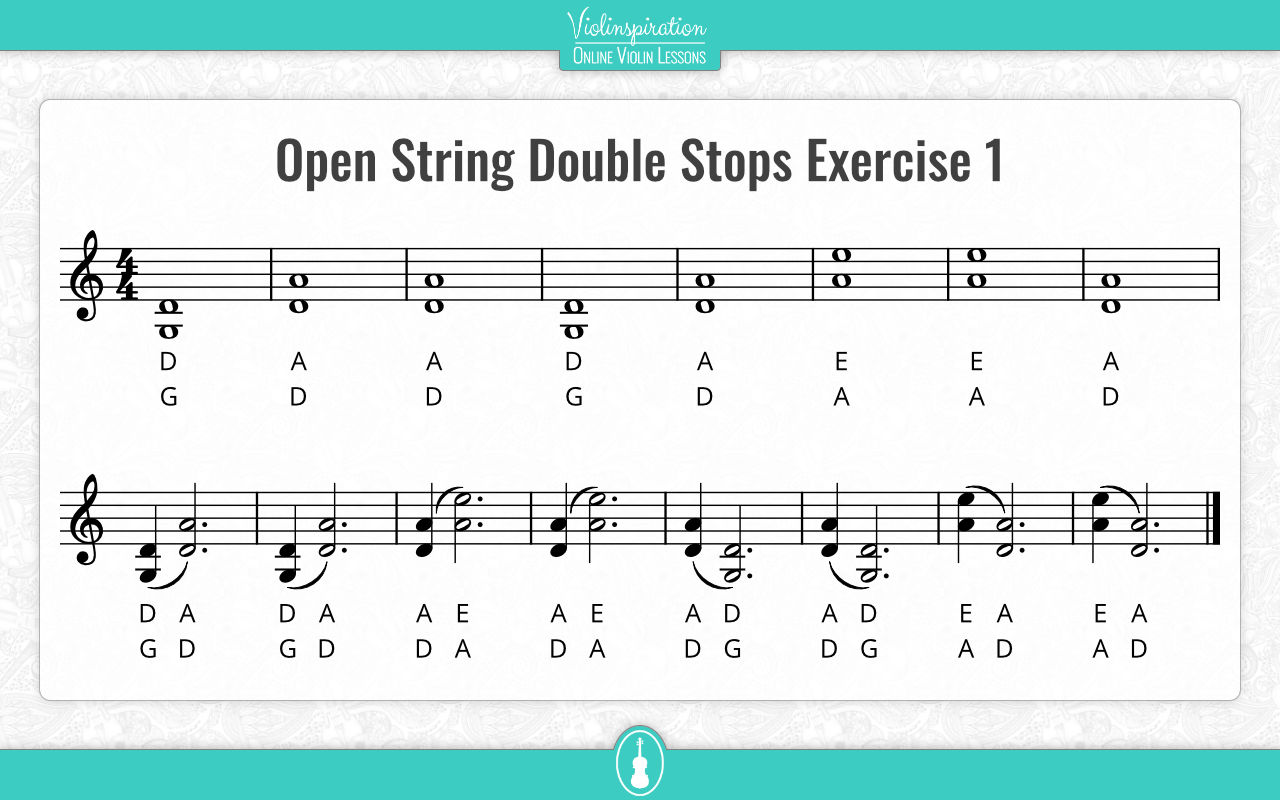
This exercise will help you get a clear sound on both open string double stops and fingered double stops! Getting an even tone on both strings will really elevate the sound of any type of double stop.
Double Stops with One Open String
The second easiest type of double stop to play is one open string with one fingered note on a different string. To the left hand, these types of double stops will feel similar to playing a single note. On the right hand, you’ll have to play on two strings simultaneously.
Practicing the open strings exercise above will help you learn how to play on two strings seamlessly. Then, you’ll just need to add one note in the left hand.
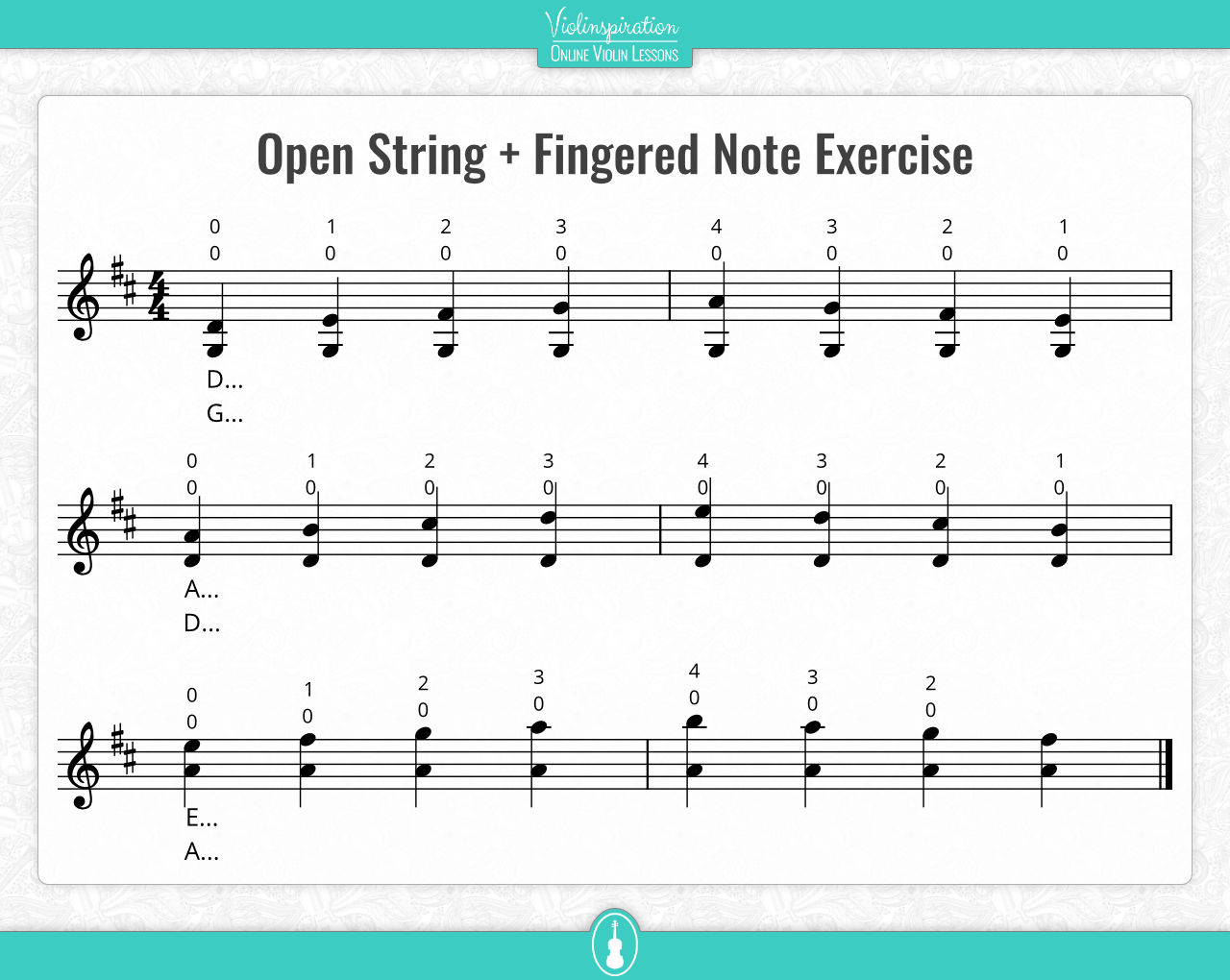
Double Stops with Fingered Notes on Two Strings
Double stops with fingered notes on two strings are the most difficult to play. In addition to playing on two strings at once with the bow, your left hand will be playing on two strings. For these double stops, playing in tune can be the most difficult part.
My favorite way to practice these double stops is to play each note separately (this way I can work out the intonation), then together as one double stop with the bow.
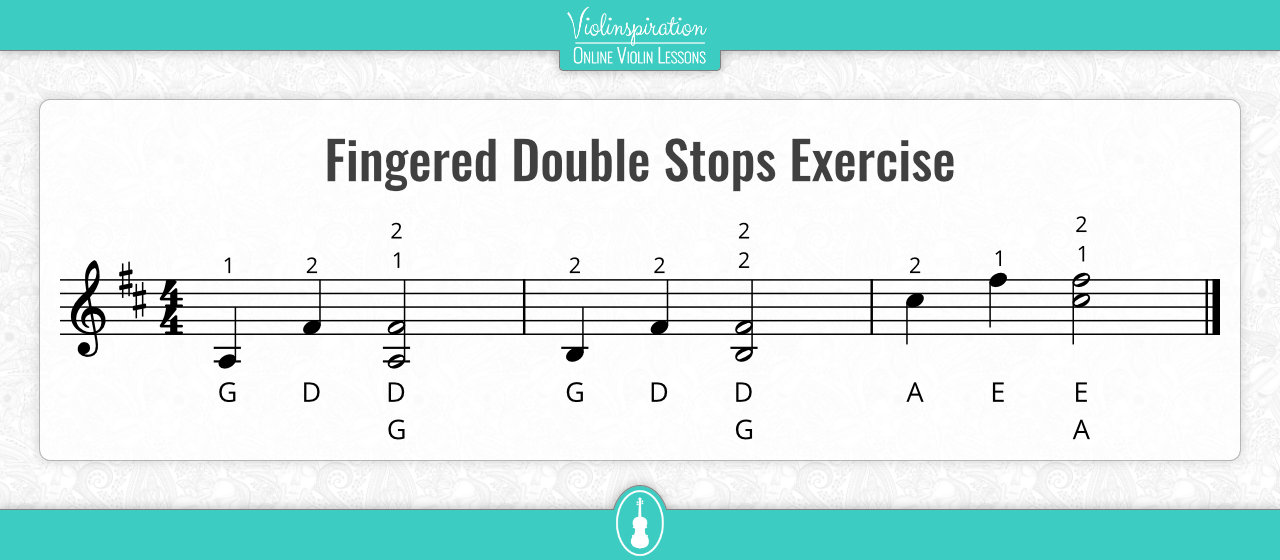
Now, let’s have a closer look at double stops in the first position divided by the interval between the notes (distance counted in semitones between the two notes).
Seconds
A “second” is a musical interval that spans two notes: they’re right next to each other. (i.e. C and D, D and E, etc.)
Seconds are generally difficult to learn because they must be played with the fourth finger on the lower string, and the first finger on the higher string. Seconds can be played in all positions, but there are only six options all in the first position:
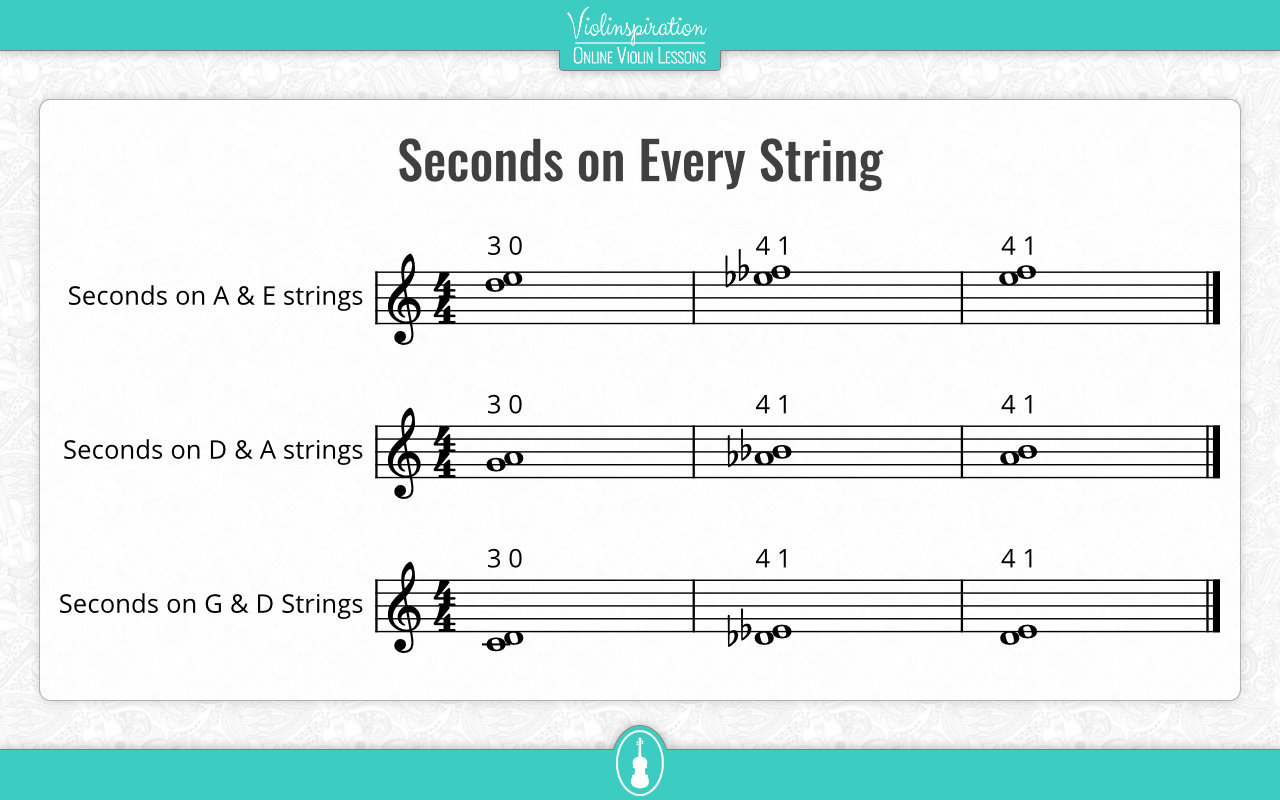
Thirds
Thirds are a very common double stop to play in violin music. A third is a musical interval that spans three notes. The notes are always on two lines, or on two spaces. (For example: D and F, A and C, etc.)
Here are all of the thirds you can play in 1st position:
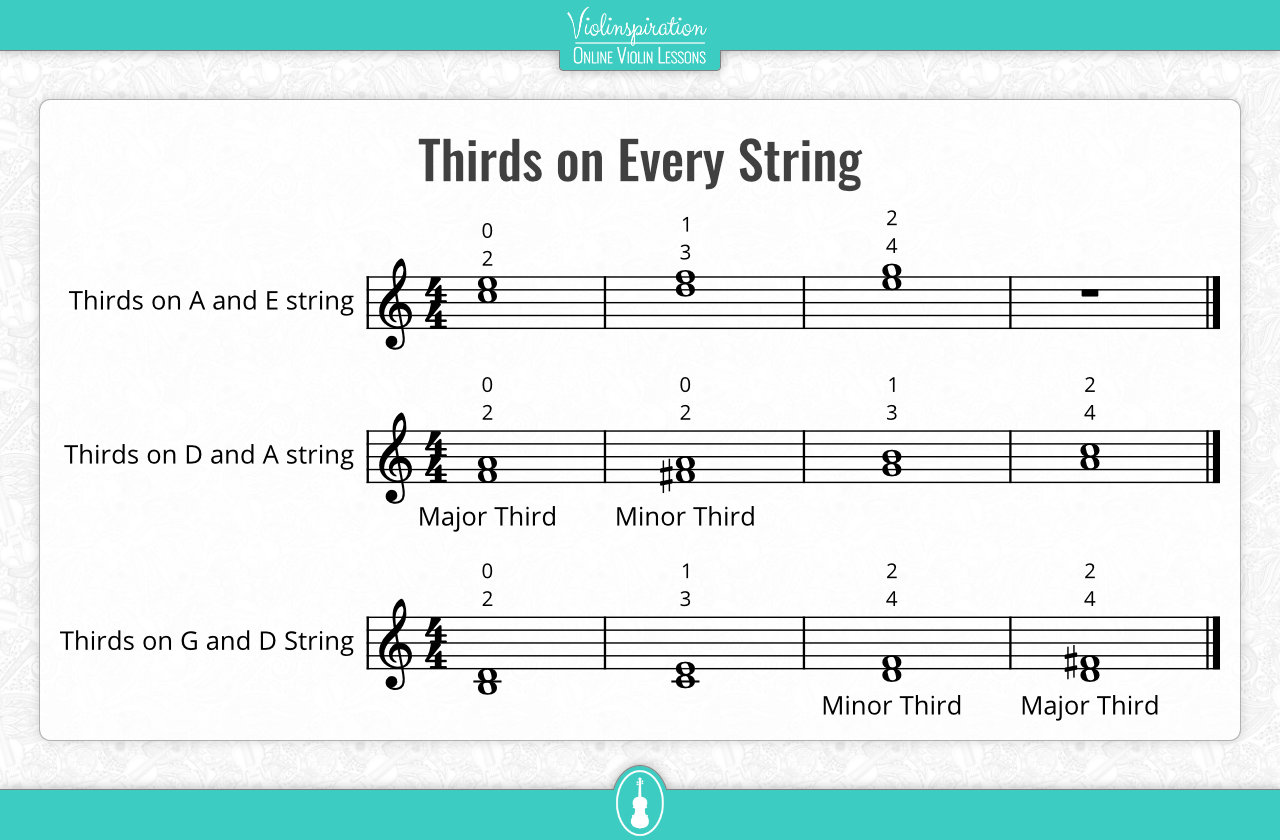
Fourths
A fourth spans four notes, so for example, C to F, or A to D.
Fourths are played with a higher finger on the lower string, and one finger lower on the higher string. For example, 3rd finger will be on the D string and 2nd finger on the A string.
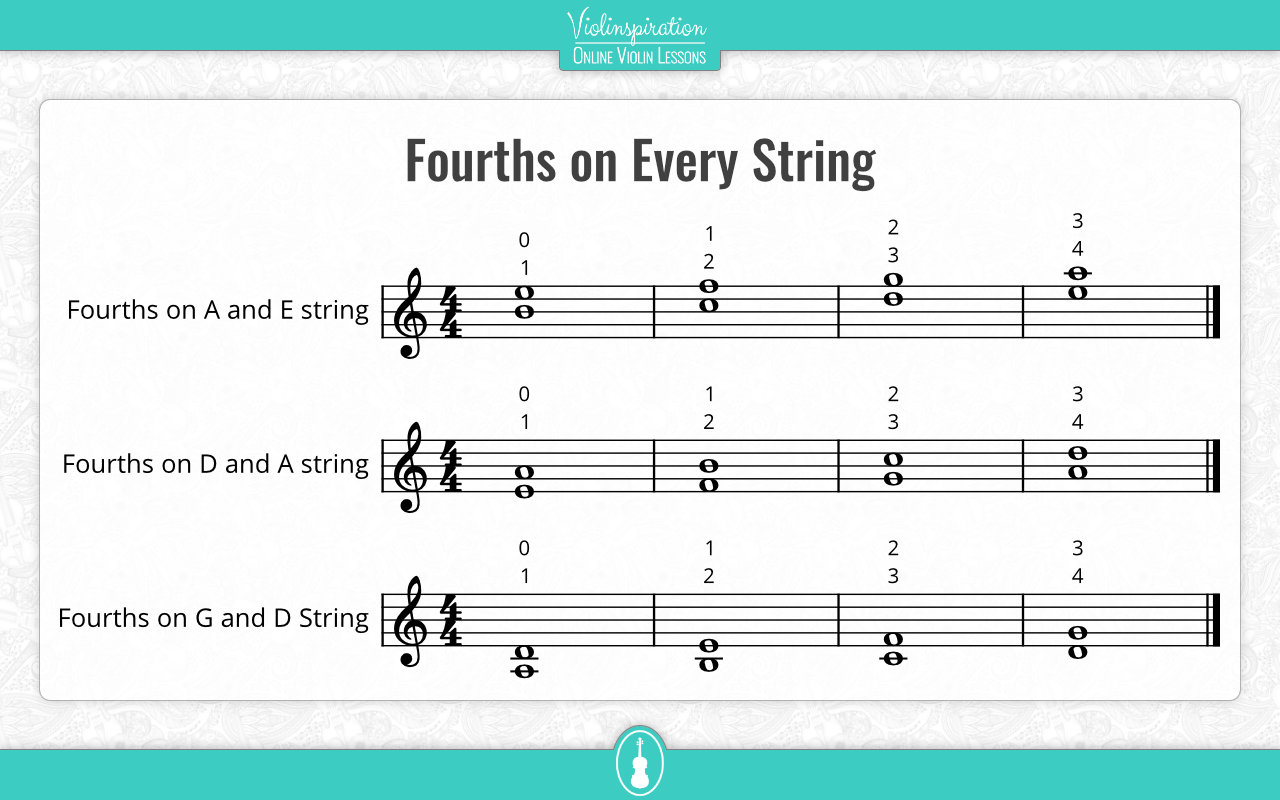
Fifths
The open strings of the violin are tuned in fifths, which makes playing fifths easy, at least on open strings. Fingered fifths are a bit harder, as you need to use just one finger on two strings. Getting the intonation of fingered fifths just right can be difficult and frustrating, but with some practice, you’ll find the right place for your finger to play both notes in tune.
Here are all the fifths you can play in 1st position:
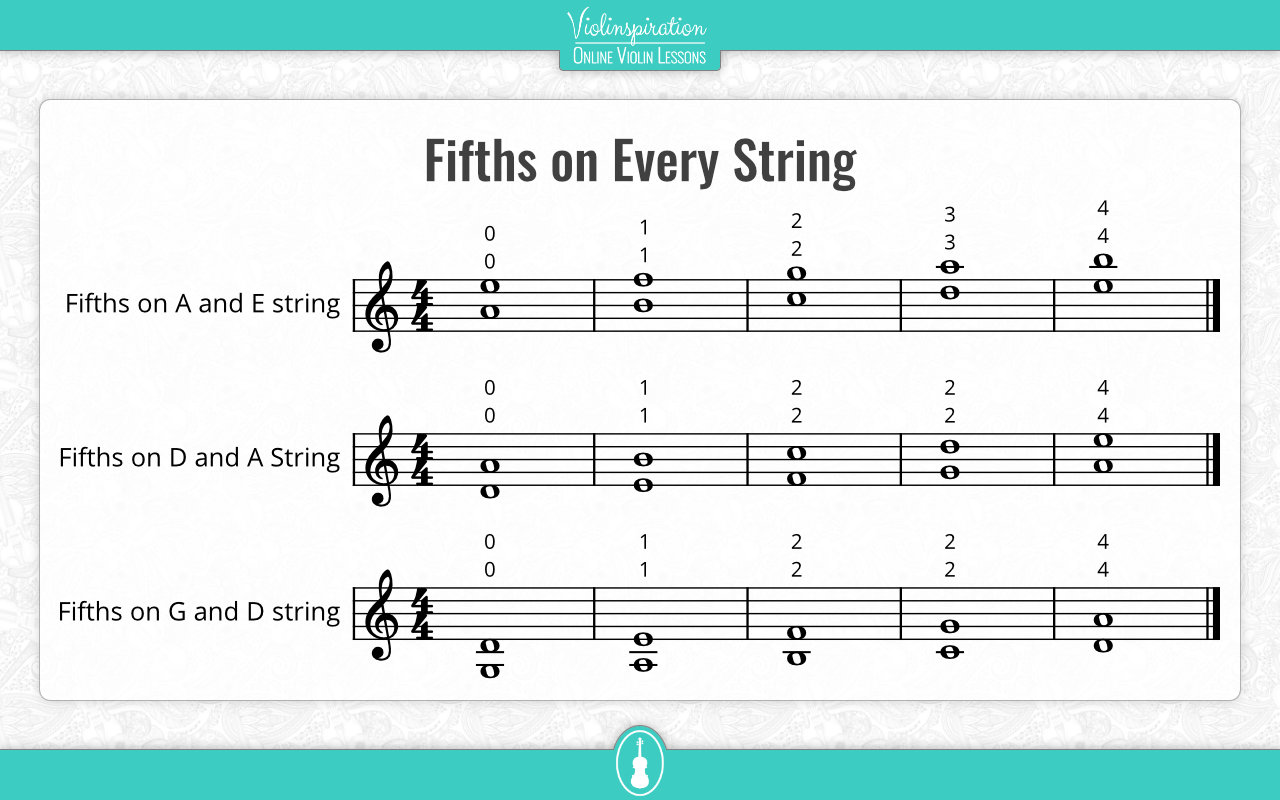
Sixths
A sixth is a musical interval spanning six notes. For example, C to A, D to B, and G to E are all sixths.
Sixths are played with a lower finger on the lower string, and one finger higher on the upper string. Sixths are very pleasing to the ear, and are used in a lot of violin pieces!
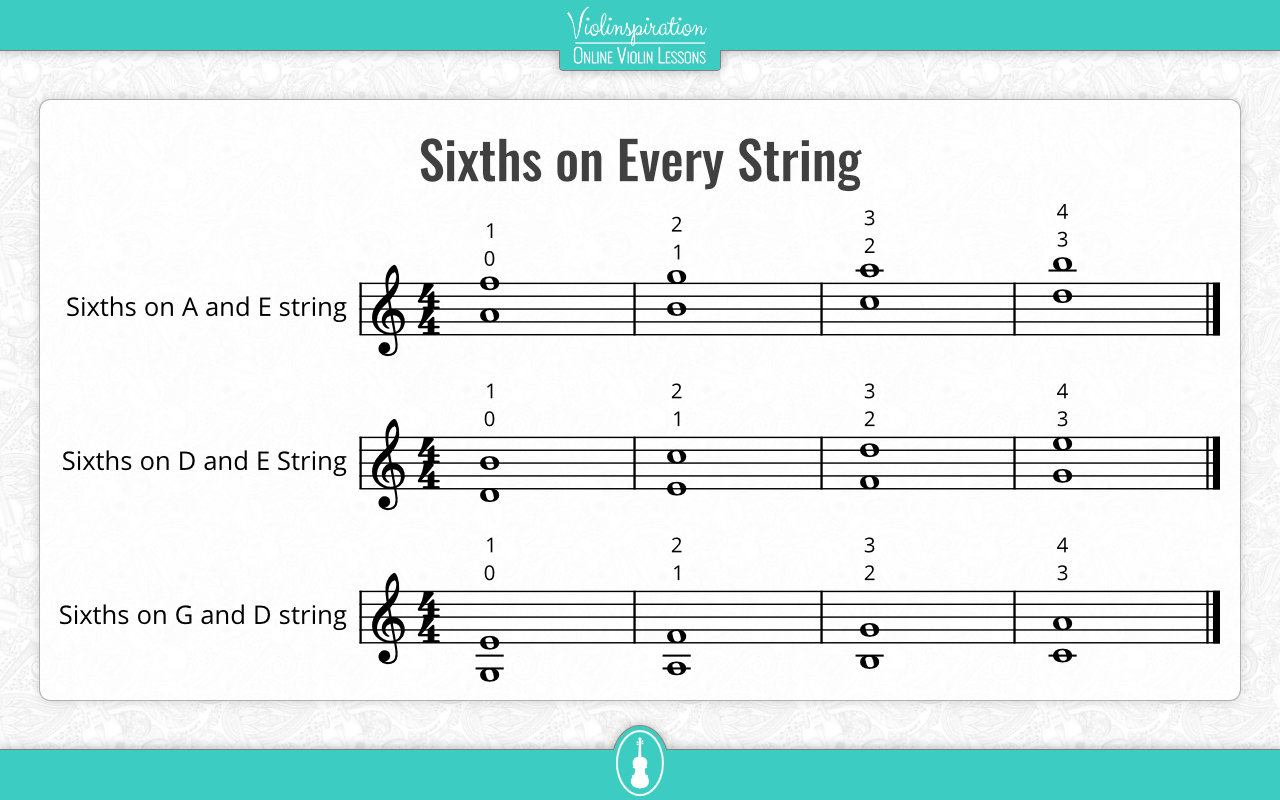
Sevenths
A seventh is an interval spanning seven notes, so A to G, B to A, etc. Sevenths sound less harmonious than sixths and are used more in contemporary music than pieces written before the Romantic period.
A common way to remember what a seventh interval sounds like is the opening of “Maria” from West Side Story.
This is how you can play every seventh in 1st position:
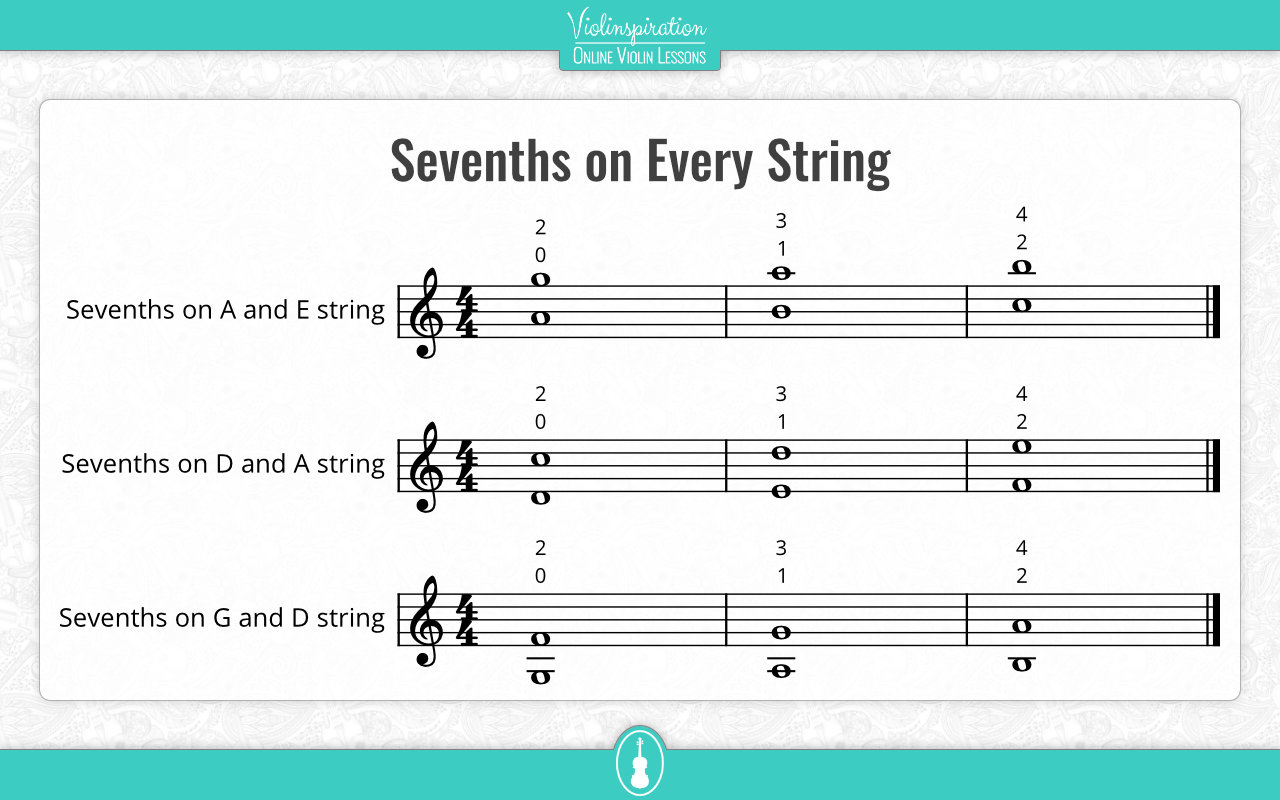
Octaves
An octave is technically an eighth and goes from one note to the same note that has double the frequency, i.e. C to C, D to D, and E to E.
This chart will show you how to play octaves up to the third position on your violin:
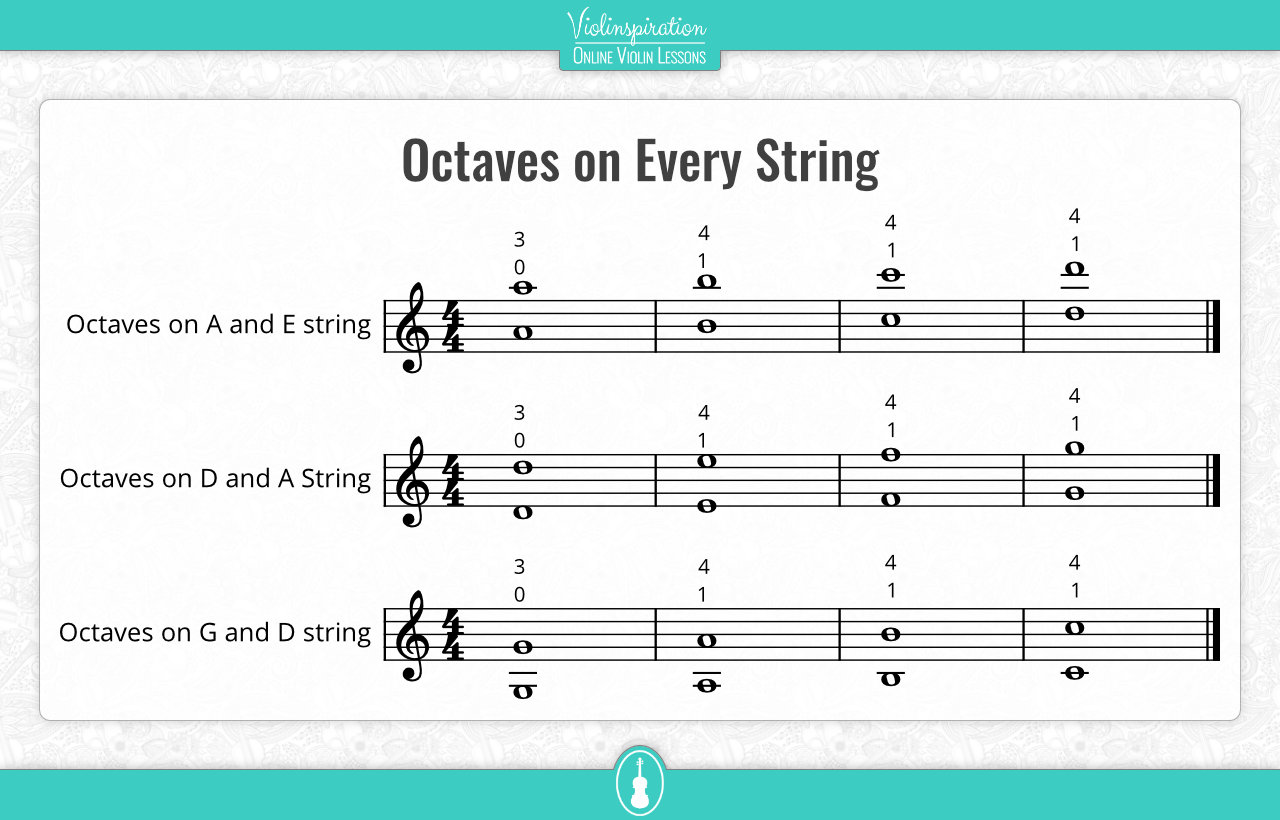
How to Practice Double Stops
Double stops can be very tricky to master, so having strong practice strategies in place is important to advance your technique on the violin.
Practice Open String Double Stops
Even if the double stop you’re trying to play is made up of two fingered notes, it’s helpful to practice open strings to make good contact with the strings through your bow.
When you are struggling with a fingered double stop, break the section down and practice the open strings that the double stops are played on. This helps create a better sound once you add the left hand notes back in.
It’s also helpful to warm up by playing open string double stops. Download below the booklet with double stop charts, including those on open strings, to aid your technique!

Free Violin Double Stops
Charts and Exercises
Practice One Note at a Time
It can be a huge challenge to finger two notes at once and get the tuning just right! When you practice double stops, first work on just one line at a time, then put everything back together.
Here’s the general method for practicing fingered double stops:
Practice one line at a time
First, practice the top notes of the double stops, because this is usually where the melody is. By playing just the top notes or just the bottom notes, you can learn the music by ear, which will help later on.
Once you feel comfortable with the notes of either the top or bottom of the double stops, then start practicing the other line.
Practice one line while fingering the other
Next, play just one line with the bow, while fingering both parts of the double stops. This helps to get better at playing the double stops with the left hand, without focusing too much on the bow.
Put everything back together
Once you feel comfortable playing each line separately, put everything back, and play the music as it’s written.
FAQ
What double stops can a violin play?
Double stops that can be played on the violin range from the minor second to the major tenth. The most common double stops are thirds and sixths. They sound beautiful, and aren’t too difficult, compared to other double stops on the violin.
Major tenths are a large stretch – they’re mostly only played by violinists with large hands!
How do you read a double stop on a violin?
A double stop in sheet music looks like two notes sitting on top of each other. Double stops are always played on two different strings simultaneously, so you’ll need to figure out where the two notes should be played – in which position and on which string.
Download the double stop charts to get a good starting place to look if you don’t know where to play a double stop!
How can I get better at playing double stops?
Practicing open string double stops is a great way to get better at playing all types of double stops. When practicing them, it’s important to break things down to the easiest possible steps, e.g. practice only one line at a time, then the other line. This will make playing double stops feel a little less daunting!
Conclusion
I hope the charts and practice suggestions in this article are helpful for you! Be sure to download the booklet with double stop charts and start practicing right away!

Free Violin Double Stops
Charts and Exercises























